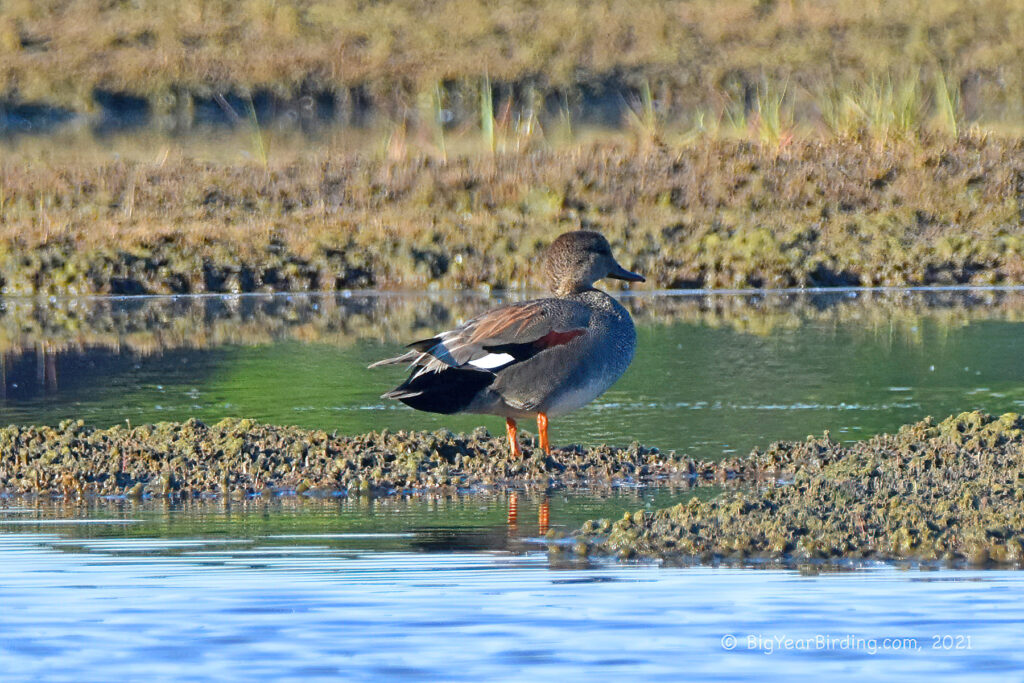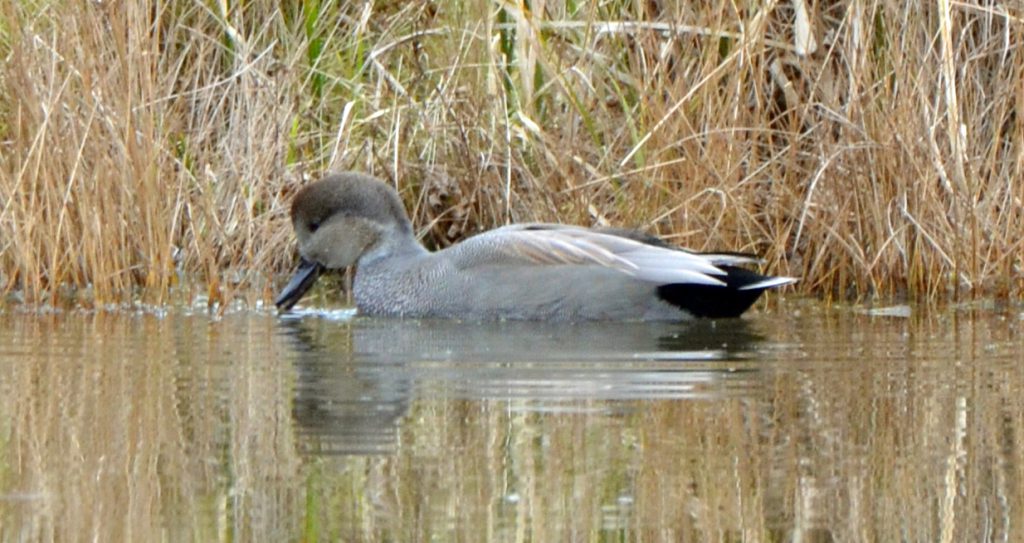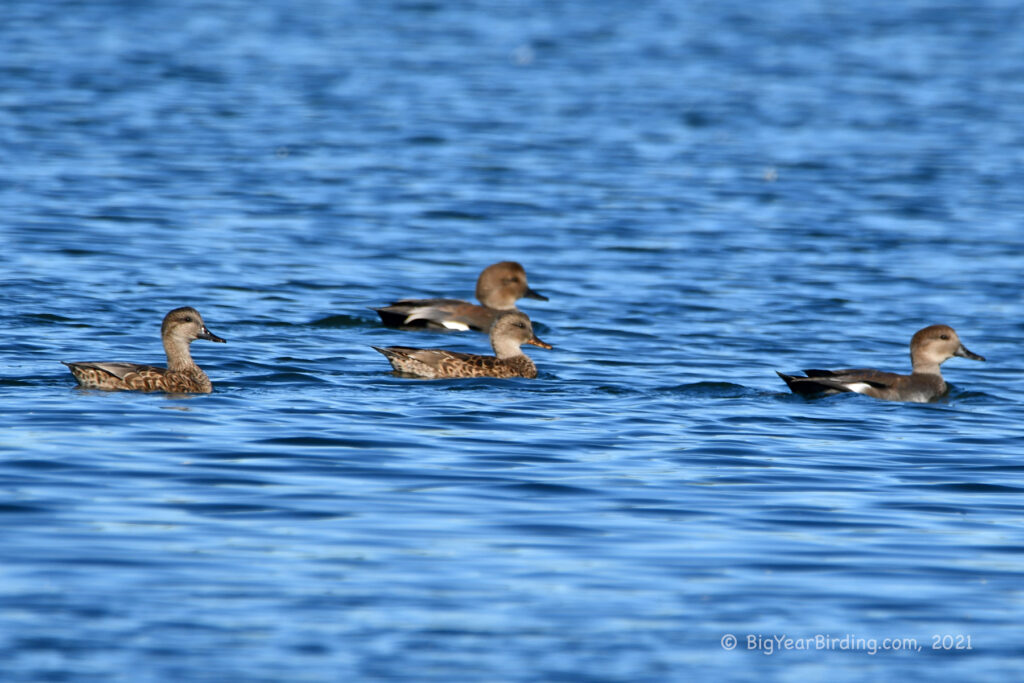
The Gadwall (Mareca strepera) is a medium-sized duck found across North America, Europe, and Asia. Adults range in length from 18-22 inches and weigh between 1-2 pounds, with males being slightly larger than females. They have a distinctive plumage with a gray-brown body, black rump, and white belly. The males have a distinctive black bill, while the females have a dull orange-yellow bill with dark spots.
One of the distinguishing field marks of the Gadwall is their distinctive wing pattern, which is visible both in flight and at rest. The male Gadwall has a distinctive white speculum, edged in black, while the female’s is a mottled gray-brown. The male’s head is also slightly darker than the rest of its body, while the female has a more uniform coloration. Both sexes have a white patch above the bill, which is visible in close proximity.
Gadwalls are migratory birds that breed in northern regions and winter in southern areas. In North America, they breed across Alaska and Canada and winter across the southern United States and Mexico. In Europe, they breed across northern and eastern regions and winter across the Mediterranean and southwestern Asia. In Asia, they breed across Siberia and winter across southern and eastern regions. They typically migrate in large flocks, often joining mixed-species flocks of ducks and other waterfowl.
During the breeding season, Gadwalls prefer shallow freshwater wetlands with tall grasses and emergent vegetation. During the winter, they can be found in a variety of wetland habitats, including marshes, ponds, and coastal areas. They are primarily herbivorous, feeding on a variety of aquatic plants and seeds, as well as insects and invertebrates.

In summary, the Gadwall is a medium-sized duck with distinctive gray-brown plumage, black rump, and white belly. Males have a black bill and a white speculum edged in black, while females have a dull orange-yellow bill and a mottled gray-brown speculum. They are migratory birds that breed in northern regions and winter in southern areas, often joining mixed-species flocks of waterfowl. They prefer shallow freshwater wetlands during the breeding season and a variety of wetland habitats during the winter. They primarily feed on aquatic plants and seeds, as well as insects and invertebrates.

